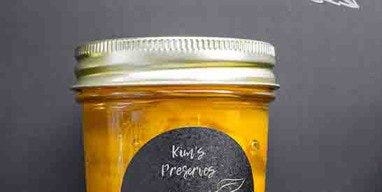The Dangers of Plastic Pollution to Marine Life
Article By : Jonathan @ BottleStore
The garbage that humans leave behind as a by-product of civilization and consumption is becoming an environmental hazard not only to the land, but also to the world's oceans, seas, and waterways. One of the most egregious examples is the millions of tons of disposable plastic that has found its way into our waters. The sheer amount of bottles and caps, jugs, beads, packaging, and other assorted plastic waste, accounts for up to 80% of litter in the ocean. These items are a result of everyday plastic use in homes, schools, and businesses, and they work their way to the world's oceans by many different routes, including illegal dumped by water-going vessels. It may also flow down rivers or be washed to sea after being dumped on the beaches and coastlines. Heavy rain storms can also carry plastic garbage into the oceans via sewer lines and storm drains. Ocean plastic pollution spreads thousands of miles away beyond land and is extremely dangerous to sea life people alike.
Every year, between 8 and 12 million tons of plastic trash finds its way into the world's water. The sheer amount of ocean-borne plastic waste has accumulated into large concentrated spots in the world's oceans. These masses are known as garbage patches, and they are herded into large concentrations by ocean currents or gyres. Some of these patches are twice the area covered by the state of Texas. The first garbage patch was found in 1997 by Captain Charles Moore, who was in the midst of a sailing race in the Pacific. Since then scientists have found a total of five major plastic pollution patches. They exist in the Indian Ocean, as well as the north and south Pacific, and the north and south Atlantic oceans. When it comes to dumping plastic into the oceans, the worst offender is China, while thanks to new regulations; the United States is a distant 20th place.
The threat that plastic waste represents to animal life is manifold. For one, animals can mistake plastic debris for food and consume it. The material can physically clog and overcrowd their stomachs, as it is almost impossible to digest, and can result in the animal's death by starvation. Larger pieces can also entangle and immobilize wildlife, resulting in starvation or drowning. Plastic can also cause death by strangulation, while creatures who encounter floating plastic bags may die from asphyxiation. Invasive species of animals may also ride on pieces of plastic to new areas where they may then threaten the native wildlife.
Plastic debris brings with it a host of toxic hazards as well. For instance some types of plastic release toxic chemicals, such as vinyl chloride, styrene and bisphenol-A. In addition plastic waste attracts other toxins, such as the insecticide DDT and polychlorinated biphenyls, or PCBs. Fish and other marine life that consumes plastic may, in turn, be killed by these toxins, or pass them onto humans and other creatures who consume them.
Plastic is cheap to produce and extremely durable, as anyone who has tried to cut plastic packaging has discovered. In fact it is so strong that it takes up to a thousand years to break down and there is doubt among scientists as to whether certain types of common plastics will ever completely disintegrate, or biodegrade. This means that it can remain a threat to ocean life in perpetuity. While sunlight and other factors can help break plastic down to a certain extent, it only succeeds in reducing it to smaller pieces and doesn't destroy it completely. This makes plastic waste even harder to detect and remove, because even the smallest pieces are deadly to smaller forms of life. Furthermore, it is difficult to remove the smallest fragments of plastic because it is hard to do so without also accidentally removing things like plankton, which is an essential part of the ocean food chain. Plastic waste is thought by scientists to outweigh zooplankton in the ocean by a ratio of over 35 to one.
At least 700 known species of marine animals are known to be harmed by plastic debris. Birds accidentally feed plastic bits to their chicks, putting them at danger of starvation. In addition, birds, fish and members of other animal species have been found dead as a result of being drowned or entangled by plastic. Sea turtles have been found with their bodies cinched by strands of plastic, and even elephant seals and whales have been caught in discarded fishing lines. Plastic can also cut into the flesh of animals, leaving them at risk for death by bleeding out, or by infection.
Fortunately, solutions are being found to slow down and ultimately prevent the flow of plastic into the ocean. National laws taxing or barring the use of plastic bags in grocery stores, as well as laws against dumping plastic into storm drains are examples of effective government action. The expansion of recycling programs to include more types of plastic has also been helpful, while consumer reuse of plastic items and buying in bulk to reduce plastic packaging, has also helped to reduce the creation of plastic waste.
Consumers can also help to further cut down on plastic waste at its source by means of environmentally conscious purchase decisions. For example, this includes not buying beauty or hygiene products that use plastic microbeads, like toothpastes, body washes, and other items. Buying fewer plastic water bottles, or reusing them and recycling them, will also reduce the amount of plastic that can find its way into the water. Encouraging the systemic recycling of additional types of plastic, such as milk containers and plastic packaging, will also help to protect the world's oceans.
For more information about plastic pollution, its dangers to marine life, and how to prevent it, please see the links below.
- Plastics In Our Oceans
- Ocean Trash Plaguing Our Sea
- FAQ: Plastic Debris In The Ocean
- Marine Plastic Pollution and Seafood Safety (PDF)
- Plastics in the Ocean Affecting Human Health
- Plastics And Chemicals They Absorb Pose Double Threat To Marine Life
- What We Know About: Plastic Marine Debris (PDF)
- Our Oceans: A Plastic Soup
- Marine Plastic Contamination: Implications For Public Health And The Environment
- Vermont State College: Oceanic Pollution
- Eight Million Tons of Plastic Dumped in Ocean Every Year
- Ten Things You Should Know About Marine Debris
- Marine Debris in the North Pacific: Frequent Questions
- 10 Ways to Reduce Plastic Pollution
- Preventing Ocean Litter









